Recipe to make the best soft, paper-thin Gujarati rotli aka phulka/ roti. These basic Indian flatbread need just 2 basic ingredients and are very easy to make.
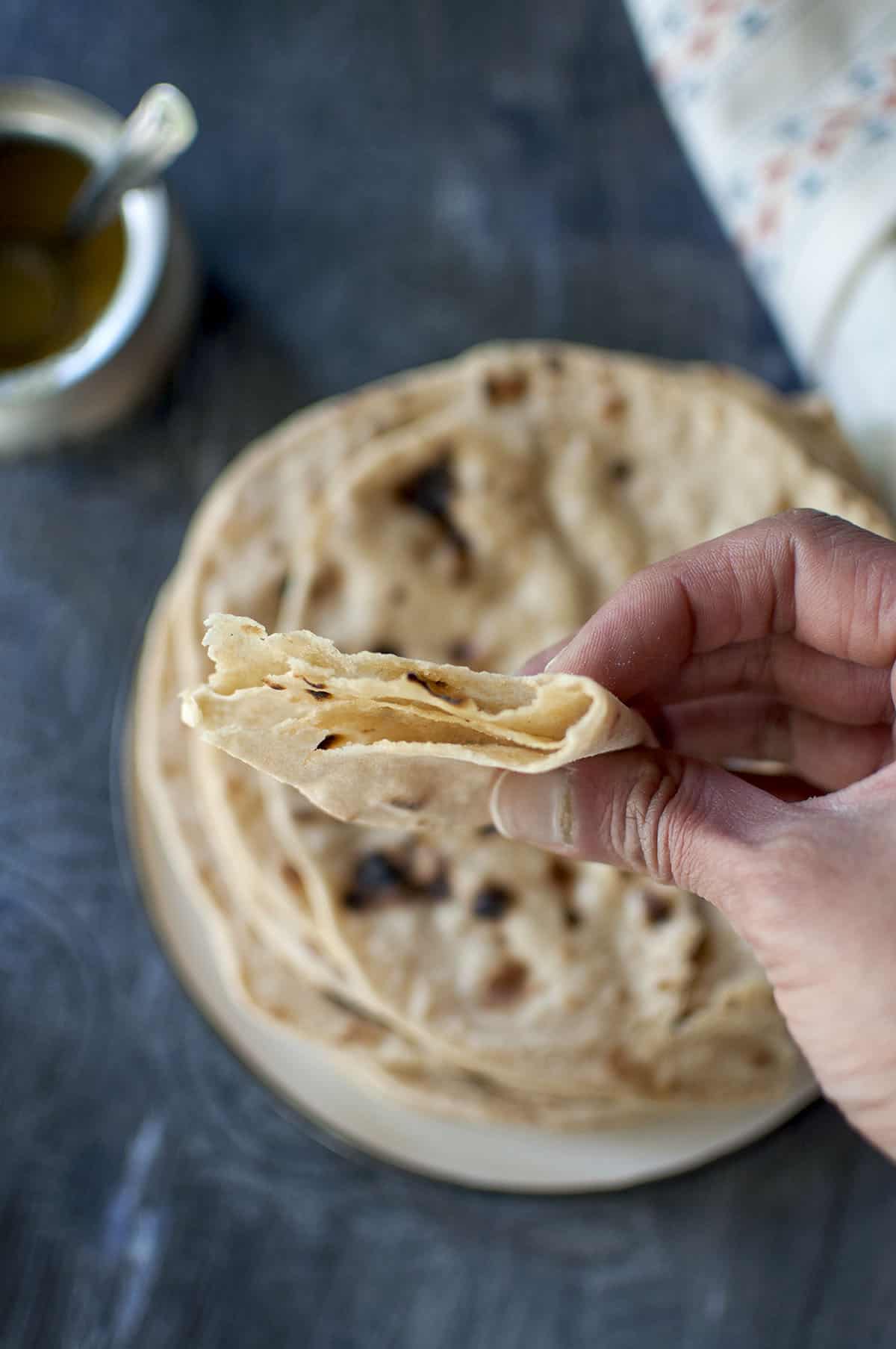
This post contains affiliate links to Amazon and other sites. I will earn a commission from qualifying purchases through those links. This blog generates income via ads. Click here to read my affiliate links policy.
Rotlis are simple, everyday Gujarati style flatbread. They are made paper thin and cooked directly on the flame to puff them up. These are also called phulkas/ chapati/ chappati in certain parts of India.
A roti to an Indian is what a flour tortilla is to a Mexican. The main difference is the type of flour used. Roti is made with whole-wheat flour whereas tortilla is made with either all-purpose flour or corn flour.
They are used as silverware in India to wrap around dals, curries, and condiments.
My mom makes the best soft roti that stay soft for a very long time. I learned a lot of tips and tricks from her and now I can make soft, puffed roti pretty well.
I have included all the tips and tricks that I learnt over the years in this post. The video tutorial will also help you to understand the process better.
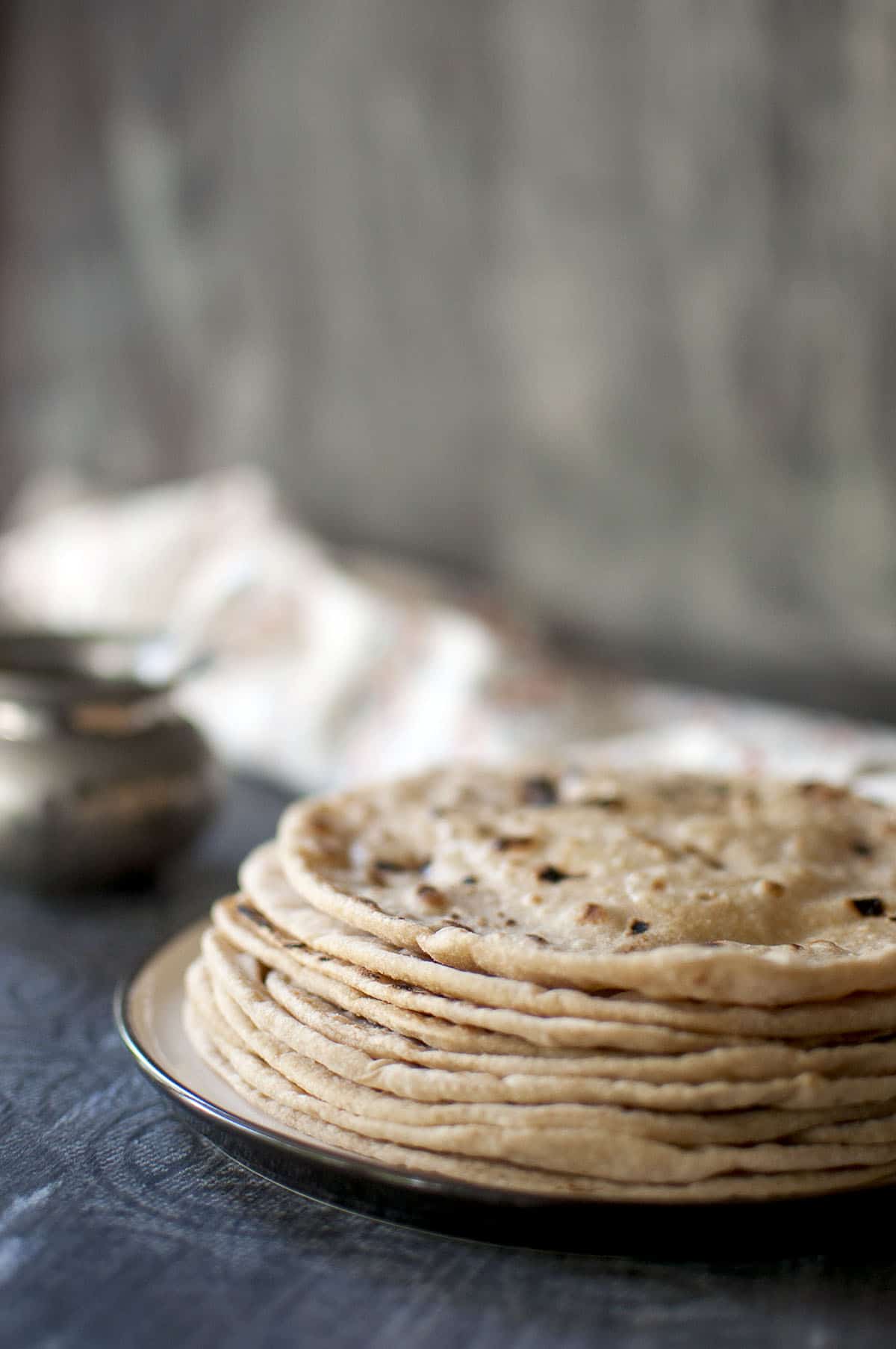
Ingredients
Roti recipe needs just 2 basic ingredients.
Atta - is Indian whole-wheat flour. It is made from lighter Indian wheat that has lower protein and is less hardy than US wheat. And that makes it perfect to make these fluffy, soft, thin-flatbreads.
You can buy Atta in Indian, Pakistani, Middle Eastern and other Asian grocery stores.
If you cannot find atta, then the best option is to mix equal quantities of whole-wheat flour and all-purpose flour.
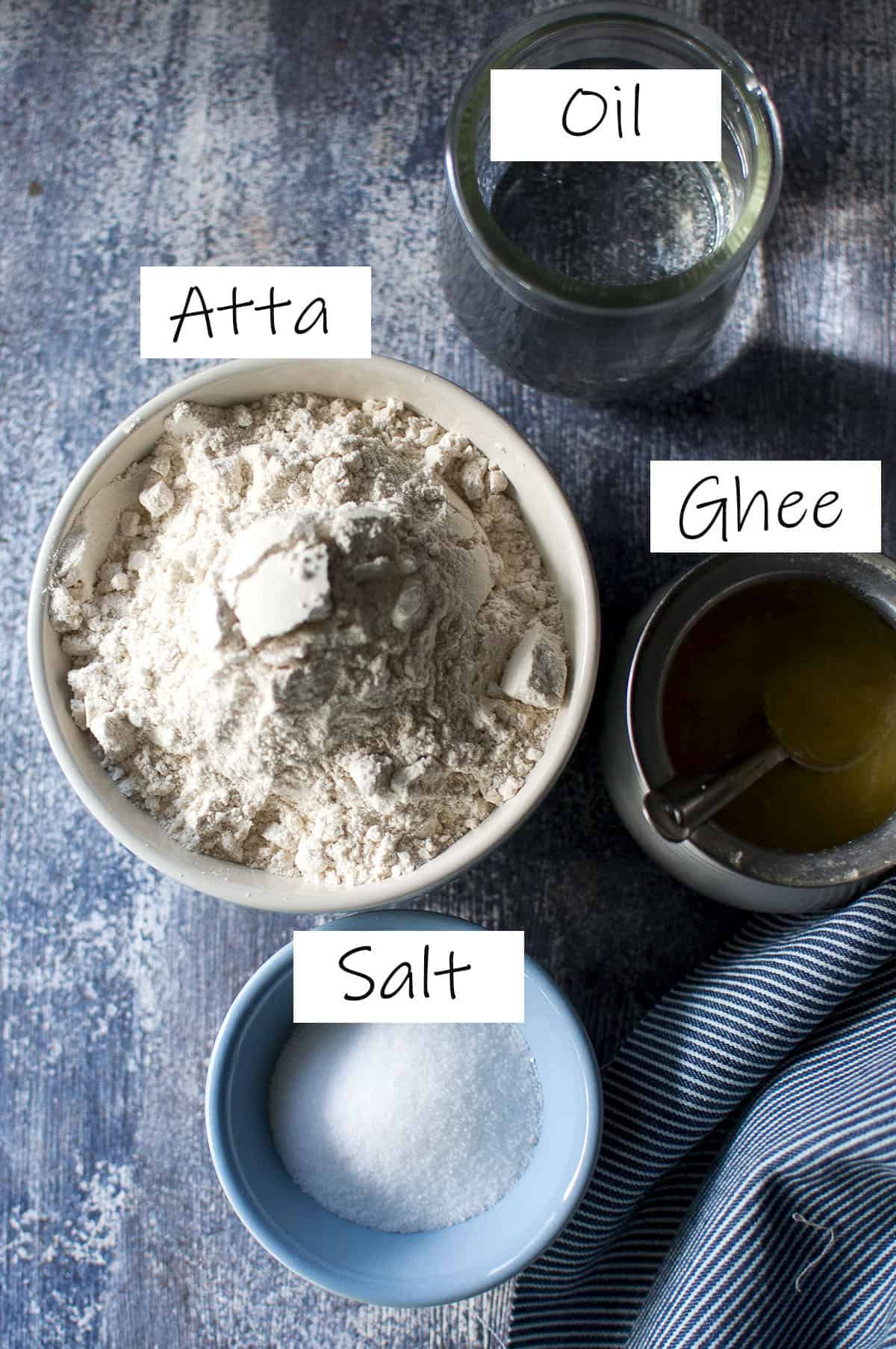
Oil - I use either canola or vegetable oil.
Ghee or butter - optional, but I highly recommended. Brushing cooked rotli with melted ghee or butter adds flavor and keeps them soft longer.
Instructions
Recipe to make roti is very simple. But it needs practice and patience. So, if you fail to make round, soft Gujarati rotli the very first time, don't be discouraged.
They will taste great, no matter what. But, overtime, you will be able to roll them out perfectly and make them puff up 100% of the time.
Make the dough:
In a mixing bowl, combine atta and salt in a mixing bowl. Add enough water to make a soft dough.
Add oil and knead until it is smooth and pliable, about 5~8 minutes. Keep the dough on the soft side and not stiff. Cover and set aside for 20~30 minutes.
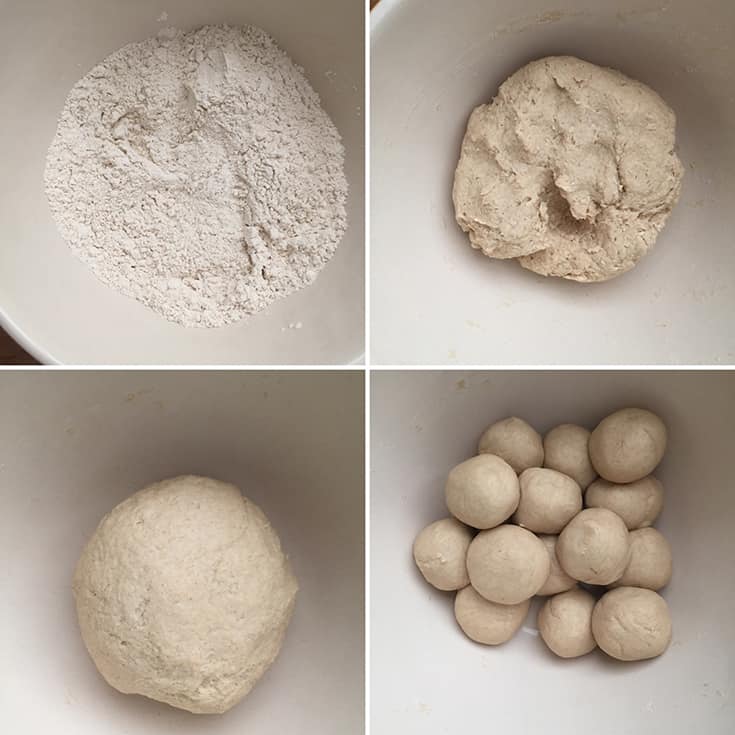
Make the Roti
Divide the dough into 12~15 equal portions. On a floured surface, roll the dough ball to form a 5"~6" diameter round disc. Make sure that the disc is even - not too thin or thick.
Dust off the excess flour and place it on a plate or parchment paper. Cover with a kitchen towel, while you roll out the rest of the dough.
Place a piece of parchment between the rolled out discs to prevent them from sticking to each other.
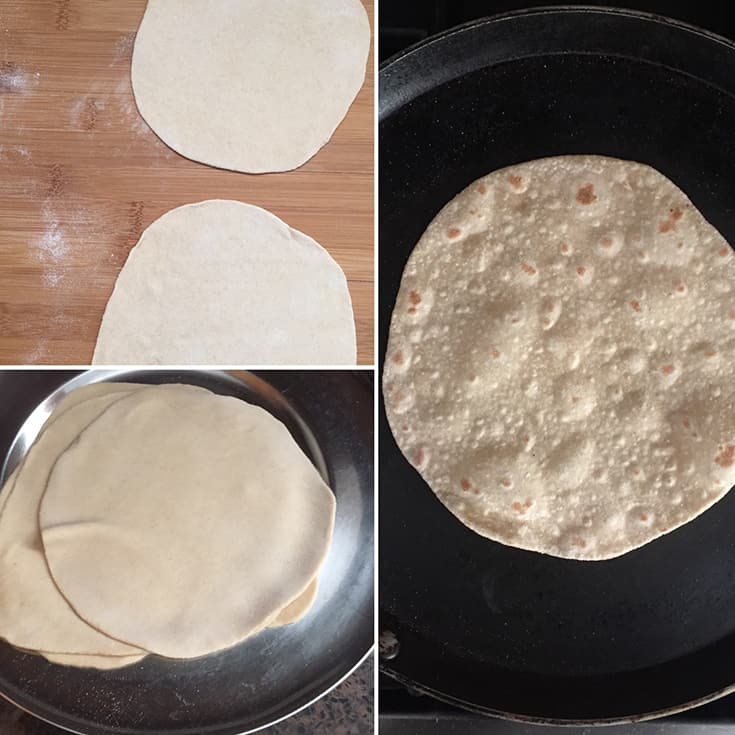
Heat a medium size tawa or griddle on medium ~ medium-high heat. If you have a gas stove, light another burner and keep the flame on medium.*
Transfer the rolled out flatbread onto the hot pan and after a few seconds, gently flip it over. Cook on the other side until air pockets appear on the surface.
Now flip the disc directly onto the open flame and let it puff up, about 10~20 seconds. Lift it off with a pair of tongs and place in a casserole dish or a piece of aluminum foil or a kitchen towel.
Brush one or both sides with ghee/ butter (if using) and fold the foil or kitchen towel over the roti to keep them warm. Repeat with the remaining dough.
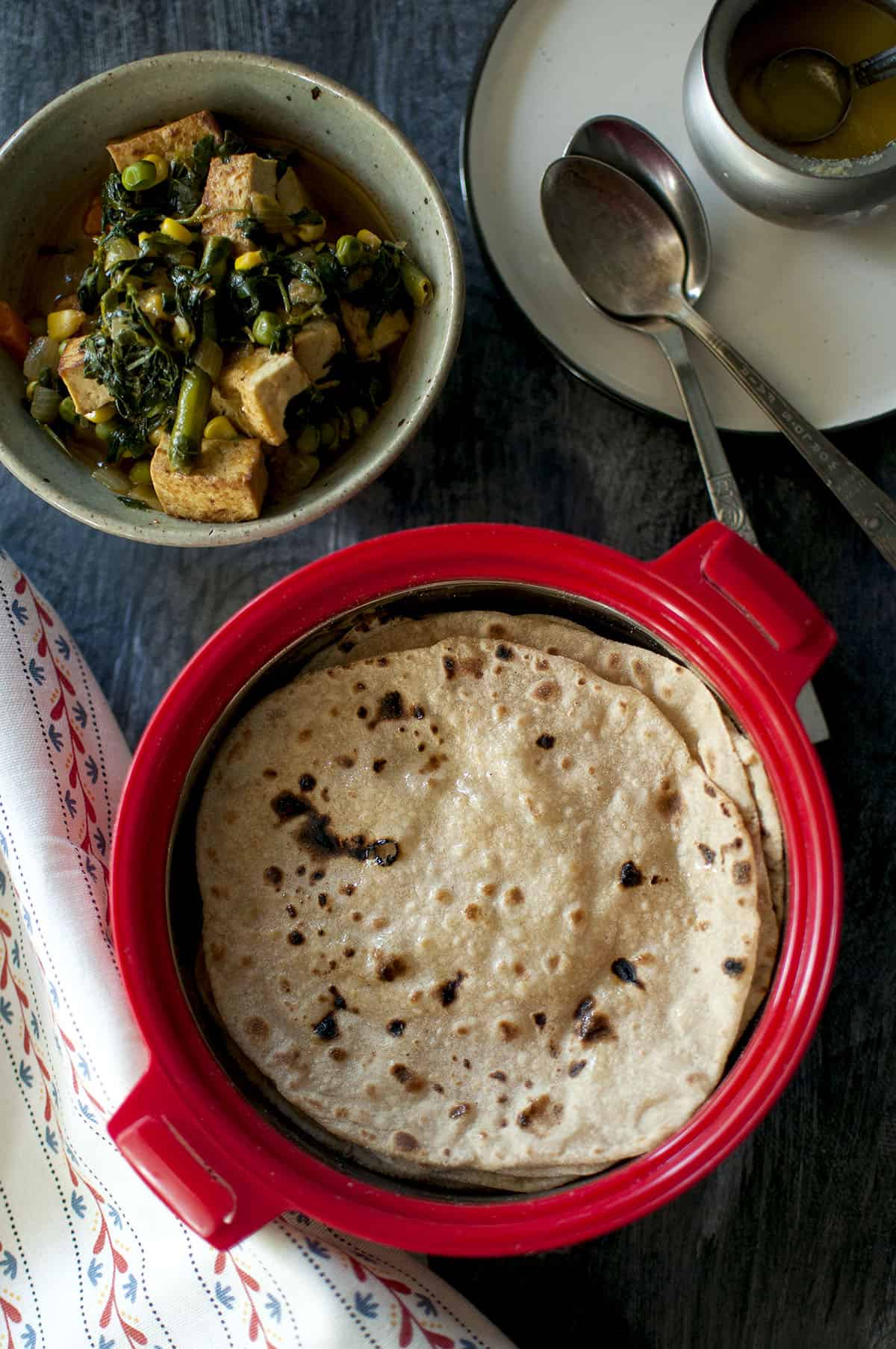
Tips
- If you cannot find atta, then the best option is to mix equal quantities of whole-wheat flour and all-purpose flour.
- To make soft, fluffy Gujarati rotli:
- Make sure that the dough is soft and not stiff. It should almost feel like play dough - pliable and soft.
- Knead the dough until it is smooth, about 5~7 minutes.
- It is OK if the dough is little sticky. I find that sticky dough is better than dry dough.
- Make sure that the flatbread are rolled out evenly thick - there should not be any tears and they should be neither too thick or too thin.
- Cook on medium to medium-high heat.
- DO NOT cook the roti for too long. This makes them tough and chewy.
- If you have an electric burner, then use a heat diffuser to cook the phulka directly on the flame. If you don't have a heat diffuser, then simply cook it in the pan until evenly cooked on both sides.
- Brush cooked flatbread with melted ghee or butter to add flavor and keep them soft longer.
- Roti freeze beautifully. Don't brush them with ghee before you freeze them. Keep them tightly wrapped in an aluminum foil or plastic wrap and then place in a freezer-safe ziploc bag. To thaw - wrap 2~3 roti in a damp paper towel and microwave for 30~40 seconds. Brush with ghee and enjoy!!
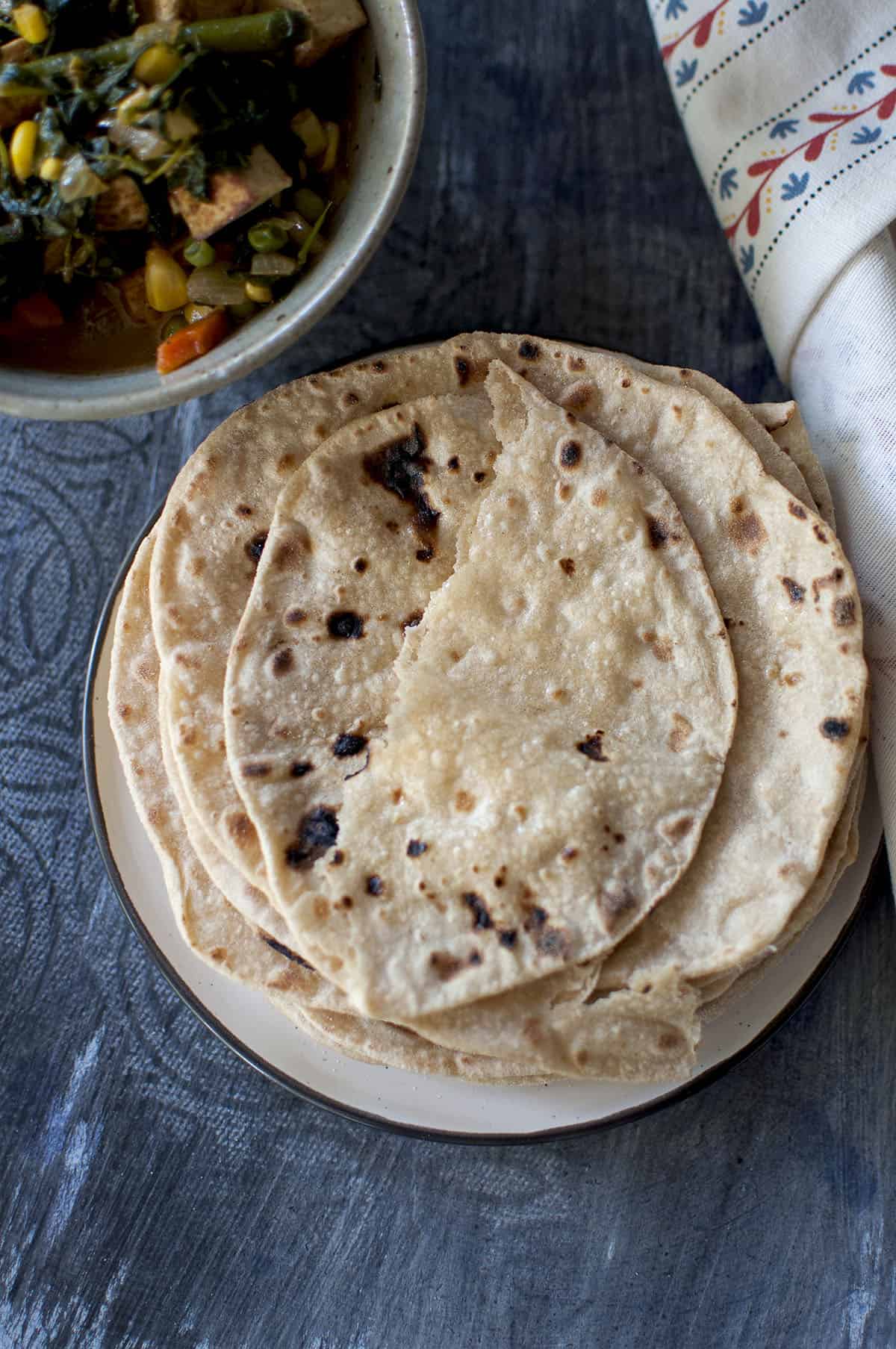
Frequently Asked Questions
Roti is made with light whole-wheat grain called 'ATTA'. Wheat grown in India is not as hardy and has less protein compared to US wheat.
As explained in the previous question, ww flour available in the US has higher protein. When you knead dough made with this flour, it develops gluten, which will make the roti chewy and tough.
Yes, you can use spelt, buckwheat etc. can be used along with atta in this recipe.
Few more Indian flatbreads to try
Side dishes to serve with Indian flatbread
- Kashmiri paneer tikka masala
- Methi Chaman
- Creamy brussels sprouts curry
- Hara butter paneer masala
- Punjabi dal tadka
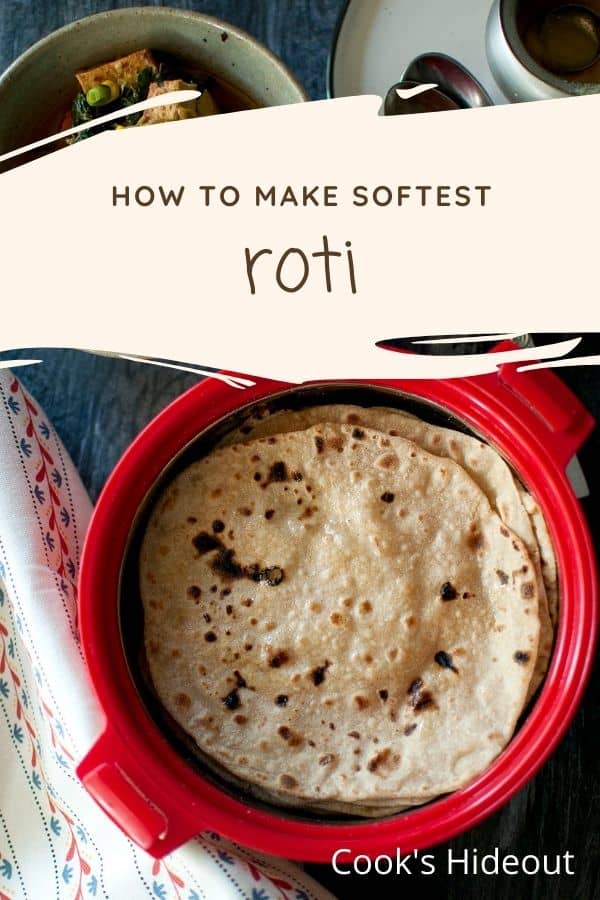
I love hearing from you!! If you’ve tried this and liked it, then don't forget to let me know. Give a star rating and let me know in the comments below. Also tag me in your creations on Instagram @cooks_hideout. I love sharing photos when people make my recipes. You can use the hashtag #cookshideout too.
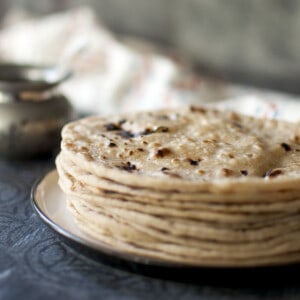
Rotlis
Ingredients
- 2 cups Wholewheat flour (atta)
- 2 teaspoons Oil
- ¾~1¼ cups Water
- To taste Salt
- As needed Ghee or butter, for brushing (optional)
Instructions
Make the Dough:
- In a mixing bowl, combine atta and salt in a mixing bowl. Add enough water to make a soft dough.
- Add oil and knead until it is smooth and pliable, about 5~8 minutes. Keep the dough on the soft side and not stiff. Cover and set aside for 20~30 minutes.
Make the Roti:
- Divide the dough into 12~15 equal portions. On a floured surface, roll the dough ball to form a 5"~6" diameter round disc. Make sure that the disc is even - not too thin or thick.
- Dust off the excess flour and place it on a plate or parchment paper. Cover with a kitchen towel, while you roll out the rest of the dough.
- Place a piece of parchment between the rolled out discs to prevent them from sticking to each other.
- Heat a medium size tawa or griddle on medium ~ medium-high heat. If you have a gas stove, light another burner and keep the flame on medium.*
- Transfer the rolled out flatbread onto the hot pan and after a few seconds, gently flip it over. Cook on the other side until air pockets appear on the surface.
- Now flip the disc directly onto the open flame and let it puff up, about 10~20 seconds. Lift it off with a pair of tongs and place in a casserole dish or a piece of aluminum foil or a kitchen towel.
- Brush one or both sides with ghee/ butter (if using) and fold the foil or kitchen towel over the roti to keep them warm. Repeat with the remaining dough.
Notes
- If you cannot find atta, then the best option is to mix equal quantities of whole-wheat flour and all-purpose flour.
- To make soft, fluffy Gujarati rotli:
- Make sure that the dough is soft and not stiff. It should almost feel like play dough - pliable and soft.
- Knead the dough until it is smooth, about 5~7 minutes.
- It is OK if the dough is little sticky. I find that sticky dough is better than dry dough.
- Make sure that the flatbread are rolled out evenly thick - there should not be any tears and they should be neither too thick or too thin.
- Cook on medium to medium-high heat.
- DO NOT cook the roti for too long. This makes them tough and chewy.
- If you have an electric burner, then use a heat diffuser to cook the phulka directly on the flame. If you don't have a heat diffuser, then simply cook it in the pan until evenly cooked on both sides.
- Brush cooked flatbread with melted ghee or butter to add flavor and keep them soft longer.
- Roti freeze beautifully. Don't brush them with ghee before you freeze them. Keep them tightly wrapped in an aluminum foil or plastic wrap and then place in a freezer-safe ziploc bag. To thaw - wrap 2~3 roti in a damp paper towel and microwave for 30~40 seconds. Brush with ghee and enjoy!!


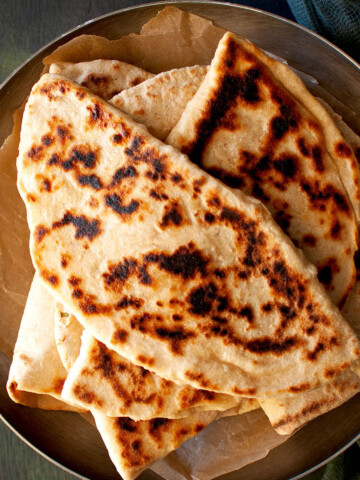
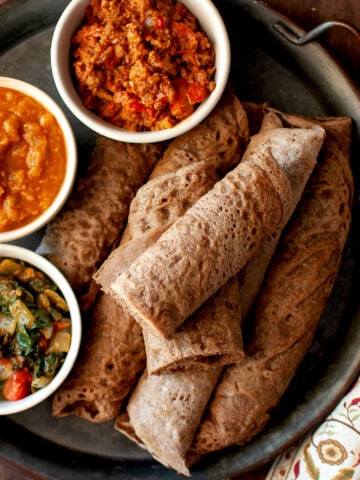
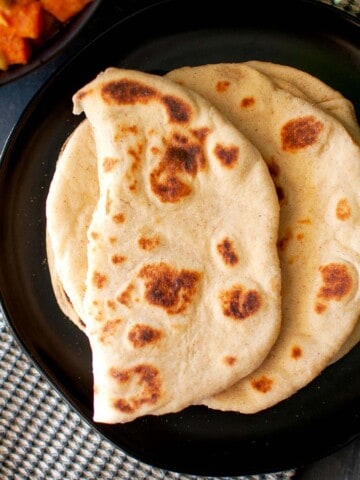
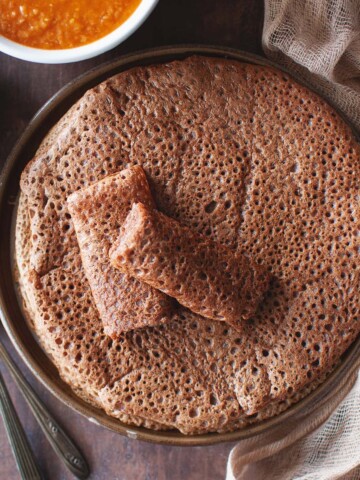
Usha Rao
Rotlis have puffed really well and live photo of rotli on the stove is cool!
Sandhya Hariharan
Beautifully captured Pavani... We have always been making them for years.. Call them Phulka's or Rotli's they are same... I have grown up with Gujrati neighbours... and mum has been making them literally everyday ever since I have known..
Srividhya Gopalakrishnan
oh wow.. beautifully puffed up rotlis. Love that video.
Kalyani
It's puffed up so beautifully !! N how is that short video captures Pavani ?My husband would be mighty pleased if IMade him such puffed phulkas .....
Srivalli
I love your gif..its puffed up so well pavani..
lavanya manvi
Delicious. Thanks for share. salwar kameez online uk //salwar kameez manufacturers //salwar kameez wholesale //indian clothing //buy indian sarees online //indian women clothing online //sarees in hyderabad online //salwar kameez in hyderabad online //sarees wholesale bangalore //sarees wholesale chennai //sarees wholesale mumbai // sarees wholesale jaipur //sarees wholesale kolkata //sarees wholesale indore //sarees wholesale kochi //sarees wholesale delhi //sarees wholesale surat
vaishali sabnani
I loved that rotli puffing..really cool..and yes the Gujrati rotlis are paper thin, even over so many years I havent been able to master this art.
Sapana Behl
Puffed rotlis looks wonderful.Love the entire setup.
Nalini's Kitchen
Rotlis puffed up so well,love the gif.
Sandhya Ramakrishnan
Absolutely love a good fluffed up roti for dinner. I have been using this recipe to make mine and they turn out perfect every time. Thanks for the detailed recipe and tips!
Chef Mireille
love your description of the roti as silverware - hahaha - I had never before made puffy rotis on open flame. Loved learning the process, so easy to follow with your step by step instructions
Usha Rao
My roti puffs up really when but are not as soft as your roties. The trick seems to be addition oil. Came out really soft this time. Thanks for the tip!